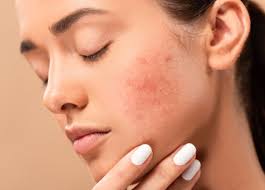
What Is Skin Cycling And Should You Try It?
Skin cycling refers to the practice of alternating which skin care products you use in order to avoid unwanted side effects, such as irritation and dryness.1
The term skin cycling was coined by Whitney Bowe, MD–a board-certified dermatologist who popularized the concept on TikTok. It involves switching up your skin care routine to give your face a much-needed break from potentially harsh active ingredients.
Learn more about skin cycling, including how it works, the potential benefits and downsides, and if it’s right for you.
How Skin Cycling Works
According to Nkem Ugonabo, MD, MPH, a board-certified and fellowship-trained dermatologist who works at Unionderm in New York City, skin cycling typically involves creating a skin care routine with “a four-night cycle of key products … to achieve the benefits of the products with less irritation to the skin.” Rather than applying the same products to your skin every day, you’ll alternate products and give your skin up to two nights of rest in between.
An example of a common skin cycling routine might be as follows:
Day 1: Using a chemical exfoliant containing alpha hydroxy acids (AHAs) (like glycolic acid and lactic acid) or beta hydroxy acids (BHA) (like salicylic acid) to remove the top layers of dead skin2
Day 2: Applying a vitamin A-based retinoid product such as retinol or tretinoin to treat acne and dark spots, improve texture, and/or prevent the effects of aging3
Days 3 and 4: Using only a gentle facial cleanser, lightweight sunscreen, and moisturizer to give your skin a rest4
Depending on your particular needs and your dermatologist’s recommendations, you might also incorporate other products into your skin cycling routine.
“Slugging with a thick ointment can be another great product to use with skin cycling, as using it daily may clog the skin and cause breakouts,” Mary Alice Mina, MD, a double-board certified dermatologist and dermatologic surgeon who works at Baucom & Mina Derm Surgery, LLC, in Atlanta, Georgia, and hosts the podcast The Skin Real, told Health. Meanwhile, others also use vitamin C serum or toner when they’re not on a “rest day.”
Benefits of Skin Cycling
Dr. Ugonabo told Health that the primary goal of skin cycling is to help skin with the tolerability of active ingredients, such as retinoids as well as lactic, glycolic, and salicylic acids. “It can be helpful for people who have tried to use these products concurrently but were not able to tolerate it,” she said.
Overall, the potential benefits of skin cycling may include protecting the skin barrier, preventing unwanted side effects from skin care products, and avoiding dry and irritated skin.
Protecting the Skin Barrier
The skin barrier (epidermis), or the outermost layer of the skin, performs several important functions. It helps your skin stay hydrated by locking in moisture and protects your skin from environmental irritants, ultraviolet rays, and allergens.
Using harsh skin care products or applying them too often can harm your skin barrier, leaving you more vulnerable to inflammation and irritation.5 Exfoliants and retinoids in particular can damage the outer layer of your skin and make it less effective as a protective barrier. Giving yourself a break from intense active ingredients and exfoliation can help to keep your skin barrier in tip-top shape.6
Preventing Unwanted Side Effects
Many effective skin care products come with unwanted side effects, such as irritation. For example, many people who use retinol report that they experience “retinol burn”—which causes red, hyperpigmented, hot, tender, flaky, and/or peeling skin.7
According to Dr. Mina, skin cycling can help you maximize the benefits from a certain product while minimizing the potential downsides of more frequent use. It can also help your skin get used to new products gradually.
“Skin cycling is a great way to get your skin used to a product that may be potentially irritating or drying to your skin,” Dr. Mina said. “For instance, if you are using a topical steroid on your skin, it’s important not to use it more than 1-2 weeks at a time, as it can cause side effects like skin thinning–atrophy–and pigmentary changes with lighter spots on the skin.”
Avoiding Dry Skin
If you tend to have dry, sensitive skin or live in an arid climate, skin cycling may give your skin care routine a boost. Many popular products that treat acne, discoloration, and signs of aging also lead to dry skin.8 You may be able to avoid drying out your skin by reaching for gentle cleanser and moisturizers on your skin cycling “rest days.”
This is especially important for people who swear by retinoids to prevent wrinkles. “These vitamin A derivatives can be irritating and drying on the skin, especially in winter or dry weather,” Dr. Mina said.
Downsides of Skin Cycling
While skin cycling has many potential benefits, it may not work for everyone. If you have a specific skin condition that requires consistent treatment, skin cycling could render your products less effective.
“Some products, such as retinoids, may be required to be used in a particular cadence in order to achieve full clinical results,” said Dr. Uganobo. “For patients with acne, for example, I typically prefer they use a retinoid more frequently.” In other words, the active ingredients in your skin care products may have less potent effects if you don’t apply them for days at a time.
Of course, skin cycling may also not be right for you if your dermatologist has already prescribed a topical medication for daily use. Some products, such as sunscreen, need to be applied on a daily basis to be effective.9 When in doubt, talk to your dermatologist to tailor a specific skin care routine to your unique needs and desired results.
Who Should Try Skin Cycling?
Anyone who has experienced skin irritation and other unwanted side effects from skin care products in the past, but who would still like to create a daily skin care routine, may benefit from skin cycling.
It may also help you if you’d like to streamline your daily self-care routine. Rather than relying on complicated, multi-step processes with a ton of products, you can use skin cycling to strip your daily regimen down and keep it simple.
If you have certain skin conditions that involve redness, dryness, itching, or swelling, such as eczema, you might also consider giving skin cycling a try.10 “People who are beginning [a skin care routine or are] new to active ingredients, as well as patients with sensitive skin and rosacea, would likely benefit the most,” Dr. Ugonabo said.
A Quick Review
Skin cycling involves using skin care products strategically, typically by alternating exfoliants, retinoids, sunscreen, and moisturizers in a four-day routine. By giving your skin a day or two “off” from harsh ingredients, you may avoid side effects like irritation and dryness while still reaping the benefits of your chosen products.
If you’re curious about skin cycling, talk to your dermatologist. They can offer valuable recommendations about which ingredients to include and which ones to skip, depending on your skin care goals and any conditions you’d like to treat.


